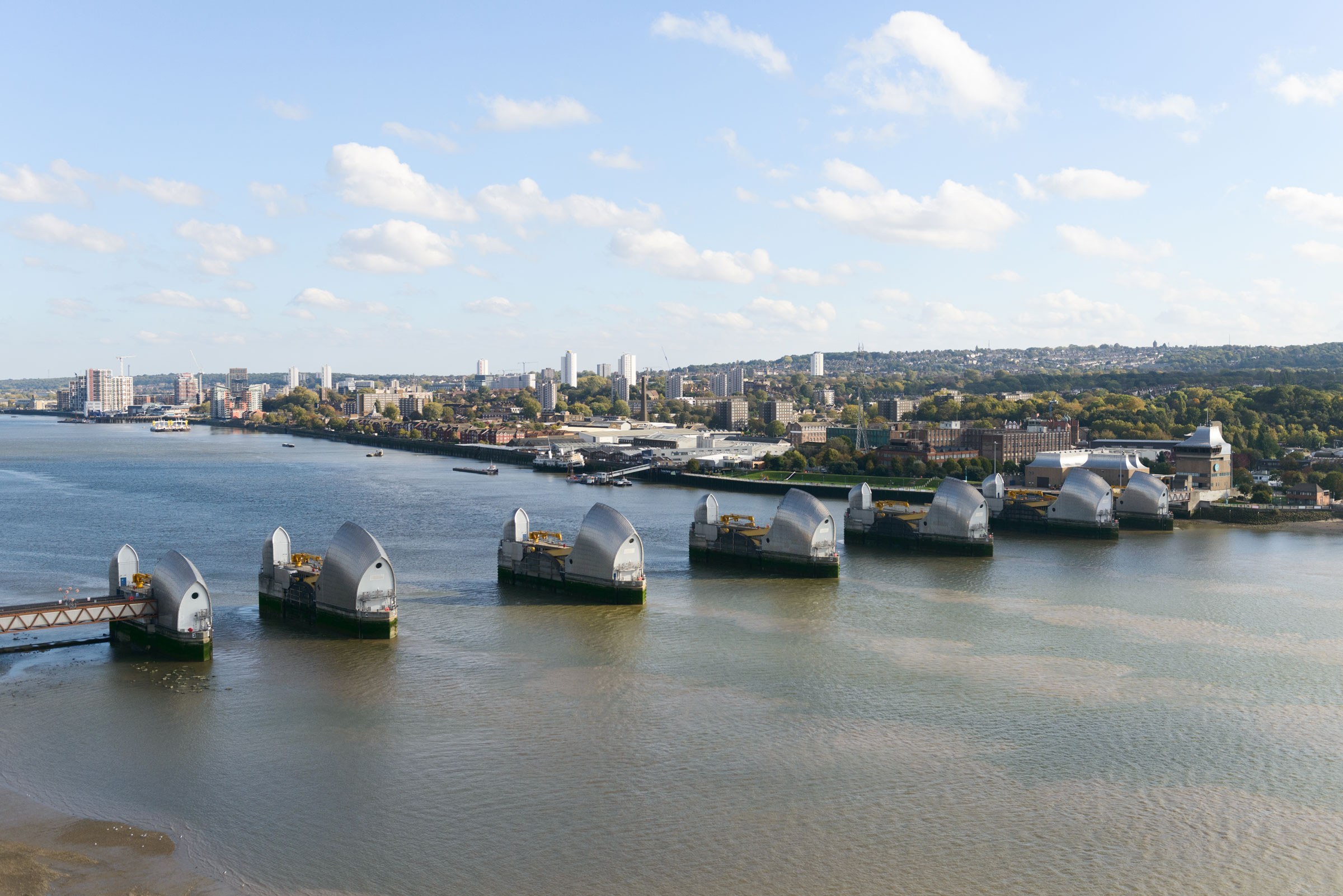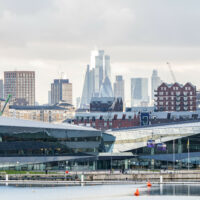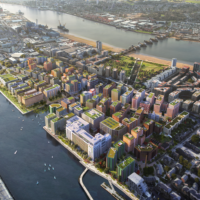
Regeneration news
Visit your refreshed Thames Barrier Park
Last year, the Royal Docks' biggest park received a refresh. Now 20 years on, the park is a beloved landmark not just for the Royal Docks but also for London.
The works have now been completed; we have resurfaced the perimeter paths, improved access, upgraded the electricals, installed new benches, built a new cafe terrace and planted 40 new trees. The Royal Docks Team are currently adding the final touches to the refurbishment of the café, which includes some updates to the on-site utility supplies. Once complete, towards the end of the year, the café will be ready for use and the community's enjoyment, adding real value to what is a beautiful and Green Flag Award-winning park!
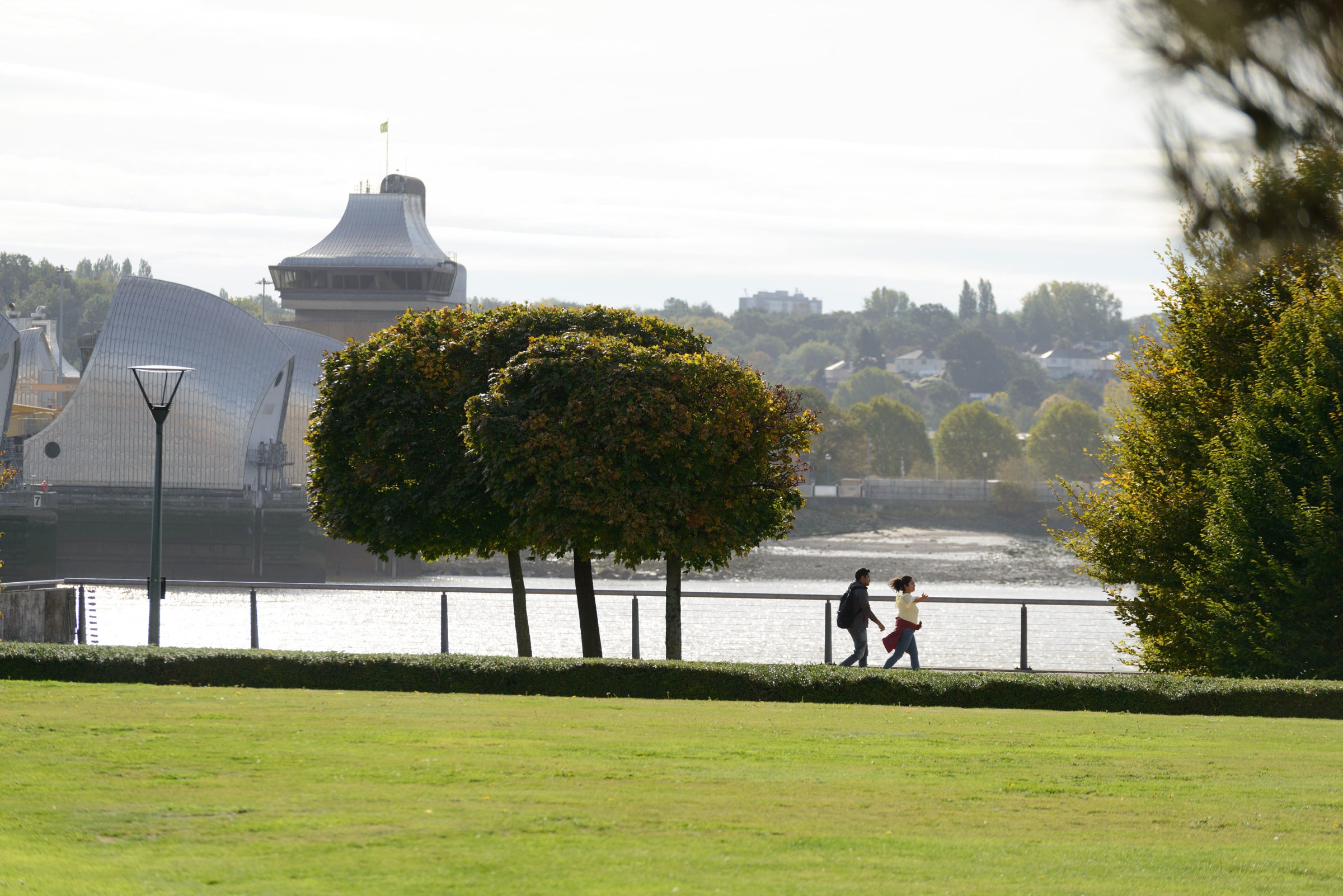
The improvement works were based on our public consultation carried out in 2020: nearly 500 of you responded, telling us you'd like better lighting, better paths, evening access to the cafe, and more greenery.
Thames Barrier Park was built to complement the elegant architecture of the flood barrier sitting adjacent to the Thames, but it's a sight in itself: dramatic hedges move in waves towards the water, concluding in beautiful views of the river. The park is a four-time winner of the Green Flag award, the national standard for green and open spaces, and the goal is to make that fifth time this year.
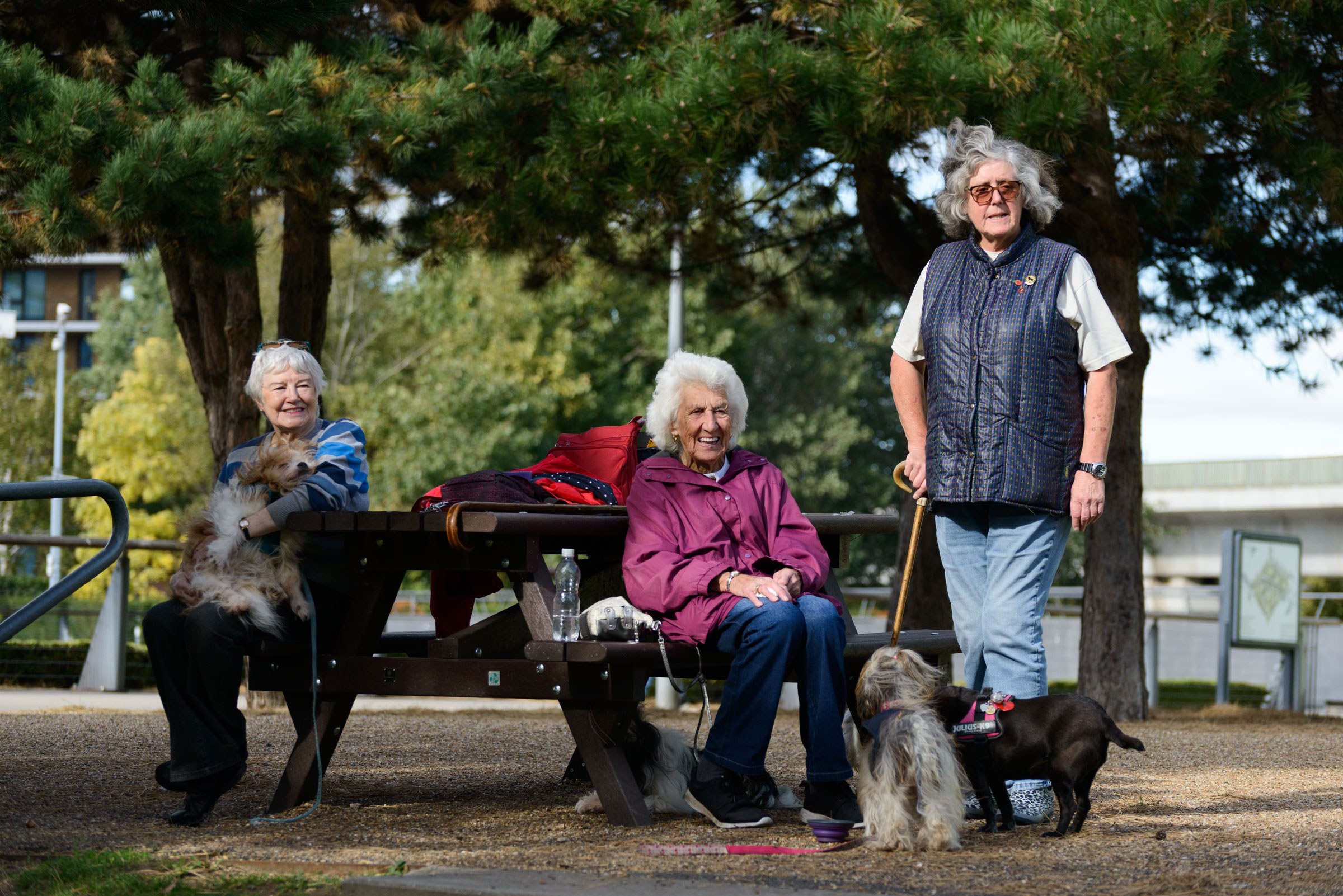
Thames Barrier Park has a fascinating history. It was once a derelict and contaminated chemical factory site belonging to PR Chemicals and is said to be one of the most polluted in the world. It took nearly 20 years to decontaminate, and, in the end, the contaminated soil was covered with a six-foot layer of crushed concrete to protect the new earth laid on top. The park itself was designed by landscape architect Allain Provost of Groupe Signes in Paris and architects Patel Taylor in London. At its opening in 2000, it was lauded as one of London's first post-modern garden designs and went on to win several awards.
Thames Barrier Park has a fascinating history. It was once a derelict and contaminated chemical factory site that took nearly 20 years to decontaminate.
An Architects' Journal article from 2001 provides a curious throwback to how the park was perceived just after its opening: "[It] represents the thought, effectively new to post-war London government, that public urban park investment can lead the redevelopment of an area." If that was a new idea at the time, things have certainly come a long way since then.
It was a much-appreciated park from the very beginning, "This public park is remarkable for London," concluded the Architects' Journal in a story which, 20 years later, has taken on a historic air, "It is refreshing to see such a simple, confidently handled, truly contemporary park design in the UK."
It's hard to imagine Thames Barrier Park looking any different than it does today. But did you know that the 'green dock', the central section of the garden which provides a wind-protected microclimate for a variety of plants and wildlife, was originally meant to be a meandering river? Or that the park was initially going to have a ha-ha (a type of sunken stone wall) on every side before that was scrapped in favour of regular fencing? Don't worry; none of our plans will change the park's excellent design.
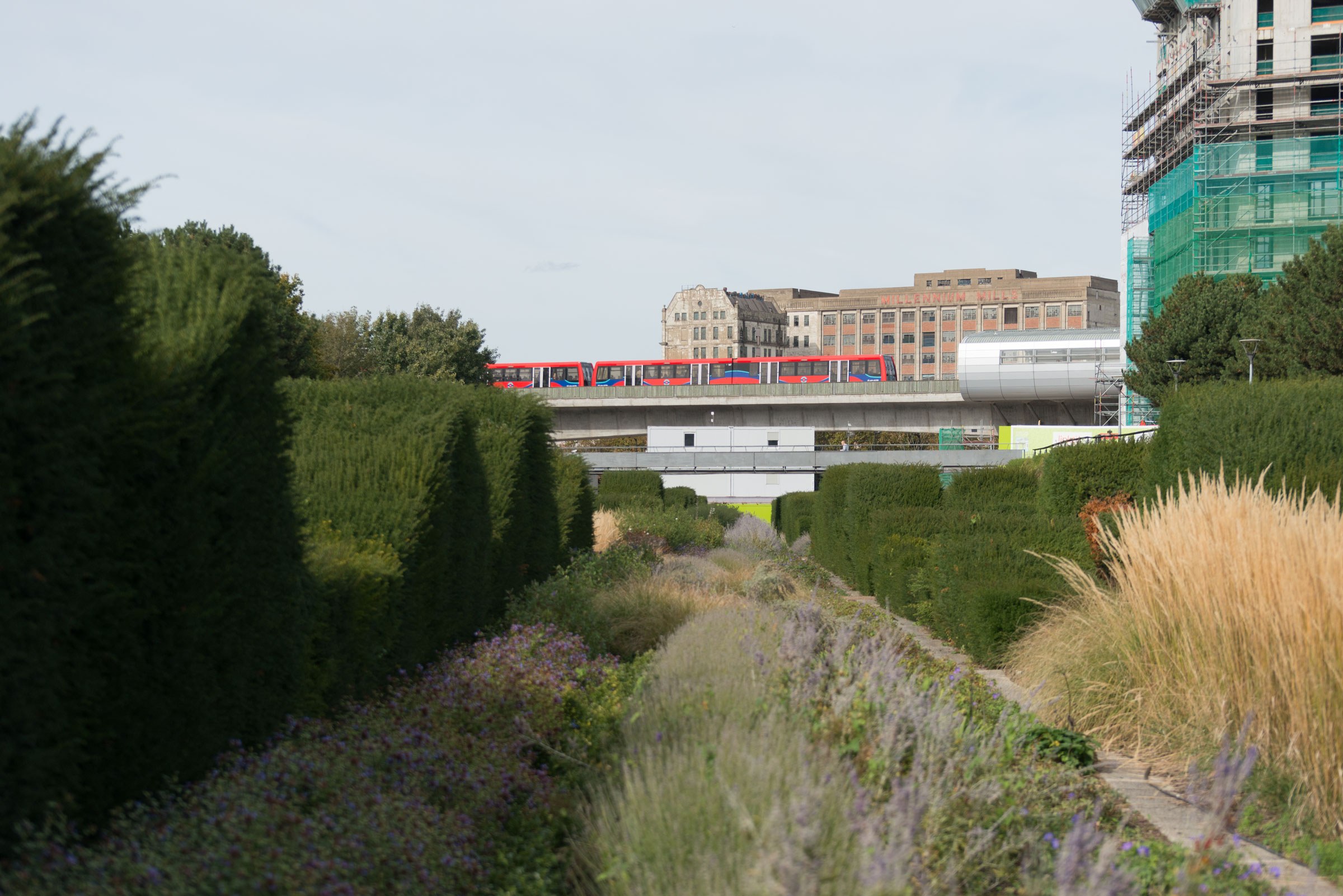
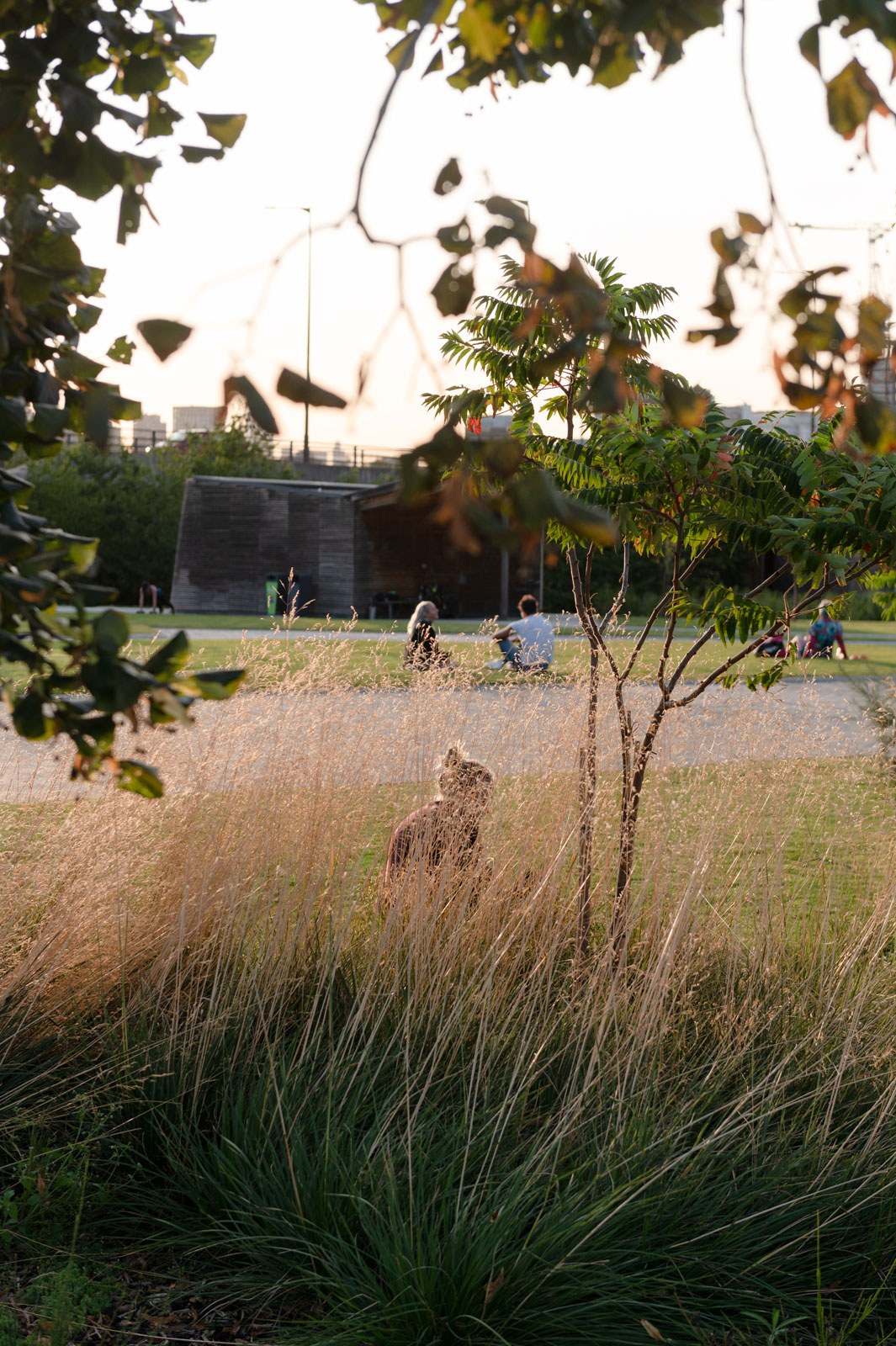
The Thames Barrier Park was far more isolated when it first opened, with Custom House being the nearest DLR station 20 minutes away. During those years, before Pontoon Dock DLR opened in 2005, it was a park visited mostly by locals and dedicated tourists. Today, as the Royal Docks steps into its new role as a creative centre for London, people from all over the city make the trip to Thames Barrier Park to see its rolling hedges and to admire the beautiful architecture of the Thames Barrier that has kept the city safe from flooding since 1974.
With the city changing so rapidly during and since the pandemic, we need green oases like the Thames Barrier Park, and we need to know that some things will stay the same. The refurbishment works will make sure that the park remains a beloved part of the Royal Docks in the years to come.
